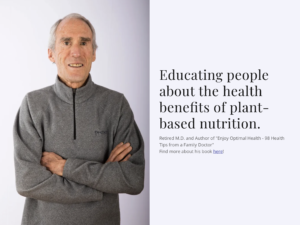 PROCESSED AND ULTRA-PROCESSED CARBS CONTRIBUTE TO DISEASE AND DEATH
PROCESSED AND ULTRA-PROCESSED CARBS CONTRIBUTE TO DISEASE AND DEATH
Health column by Dr. Greg Feinsinger. Champion of Whole Food Plant Based Living and righteous person.
There’s one thing that all nutrition experts agree on: processed—and especially ultra-process—carbs are bad for us. A recent edition of Nutrition Action, published by the Center For Science in the Public Interest, included an interview with David Kessler, M.D. about his new book “Fast Carbs, Slow Carbs.” Dr. Kessler is a former FDA commissioner, and a former dean of the Yale Medical School and of the University of California, San Francisco Medical School.
Bread, bagels, buns, cold breakfast cereals, pizza crust, pancakes, pretzels, pastries, chips, cookies, cakes, ice cream, and soda are all examples of fast carbs, according to Nutrition Action. Dr. Kessler defines fast carbs as “sugars and rapidly digestible starches like white flour and white potatoes.” These fast carbs enter the GI tract rapidly because they don’t require chewing, and are rapidly digested in the upper part of the gastrointestinal tract where they immediately enter the bloodstream and cause elevation of blood sugar and insulin. Examples of slow carbs are vegetables, fruit, and legumes, which do require chewing and which aren’t digested until they move further down the GI tract. Slow carbs do not cause spikes in blood sugar or insulin.
Fast carbs are made by “destroying the inherent structure of food…” Even some foods made with whole-grain flour can be fast carbs if extrusion cooking is used—a process which “uses intense heat and mechanical shear forces to pummel and fragment the grain’s starch granules into an ultrafine powder.” Starch molecules are broken down into shorter chains of glucose called dextrins, and as Dr. Kessler puts it, “when you eat them, it’s as though they were predigested.”
When people eat fast carbs they end up eating more calories, than they do eating “real food” which requires chewing. Processed carbs get digested before they reach the part of the intestines where GLP-1 is released—a hormone that causes satiety (a feeling of fullness). Furthermore, salt, sugar, and oil are often added to processed food—and these 3 substances are addictive. Dr. Kessler notes that “by adding fat, sugar, and salt to easy-to-chew refined flour, you create the perfect caloric torpedo.”
The average American eats about 1,000 calories a day of ultra-processed carbs, “and probably another 500 calories of fat from oil” these products contain. These extra calories result in obesity, and the repeated blood sugar and insulin spikes lead to diabetes.
Dr. Kessler says that he is a “big fan of intact whole grains like bulgur, rolled or steel-cut oats, quinoa, barley, buckwheat, and wheat berries.” He says “we went astray when we destroyed the natural structure of foods.”
Unfortunately, there’s nothing on food labels that indicates whether food has been ultra-processed. However, here are some tips that will help you make healthy food choices:
- Read the food label and see what the serving size is. Then look at the number for total carbs per serving. Under that is the number for fiber. Look for a total carb:fiber ratio of 5:1 or greater. Multiply the fiber number by 5, and if the result is the same or greater than the number for total carbs, that product has lots of fiber and whole grains.
- Look for grams of sugar per serving, keeping in mind that 4 grams of sugar is a teaspoon. Our daily intake of sugar should be none to minimal. Watch for other names for sugar such as honey, high fructose corn syrup, and organic cane or coconut sugar.
- Look for salt (sodium)–maximum safe amount per day is 1,500 mg.
- Look at the ingredients and avoid added oil.
- If the list of ingredients is longer than your grocery list, that product is likely processed or ultra-processed.
- Don’t fall for misleading advertising on bread wrappers and cereal boxes.
Leave a Reply